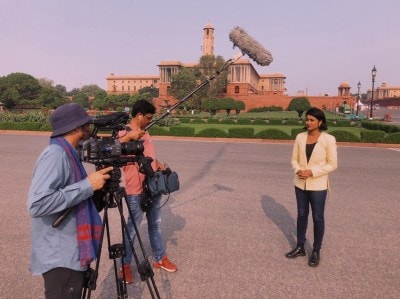- India
- International
What Teachers Must Learn
India’s education system is terribly out of step with the times
Education should achieve three broad objectives. First, provide skills required for professional growth. Second, provide life skills, which include soft skills, maturity, and emotional growth. Third, build a strong character for being a good human being and citizen. While it will be a mistake to say that the education system in India has completely failed to fulfil these objectives, a serious rethinking is required.
The National Curriculum Framework (NCF), the foundational document for elementary and secondary education, forms the basis for agencies like the Central Board of Secondary Education and the National Council of Educational Research and Training to develop and administer school curricula. The recommendations in the NCF can, at least partially, achieve the objectives that this article identifies. The government has further invited suggestions through the New Education Policy Group. But the existing volume of recommendations, as well as the new ones being sought, may still not deliver the reforms we need, primarily because of two sets of reasons.
First, there are systemic problems in our education machinery. India does not have enough teachers who can even understand, let alone practise, the methods being recommended by the various frameworks. According to the World Bank, the average pupil-teacher ratio at the primary level in India is 35 — this is the highest among emerging economies, and much higher when compared to the developed world. A high pupil-teacher ratio impedes the imparting of soft skills and has an adverse impact on the emotional growth of children. Finally, the heavily regulated private sector is hampered by archaic laws that discourage, and even prohibit, innovation.
The second set of reasons concerns the abundance of alternatives, which render the formal system ineffective, if not completely useless. The most glaring example is that of on-job training. The formal system is so de-linked from the industry’s requirements that practically every new entrant in the workforce has to be first skilled by the employer. The National Employability Report 2014 found that only 18 per cent of engineering graduates are employable.
India’s formal education system behaves like an industry of the colonial era. It neither recognises the current needs of students nor provides the desired infrastructure. Our children are put into a machine. It takes 12 years for a finished product. After this, many choose to remain on the shop floor for another four years and become a certified product. Few prefer to undertake an additional two years and become a special product. Even fewer remain in production for another four to five years to become super-special, luxury products.

In this information age, our education system is one of the things most reminiscent of the bygone industrial age. It was designed for a standardised workforce to fill government offices and factories. Today, for the most part, computers can handle standardisation tasks. What we now need is differentiation and innovation.
India needs extensive experiments in education. For example, we should rethink the necessity of children spending 12 years in school, compartmentalised into different classes with a nationally fixed curriculum. We need to experiment to find which is the most desirable way to develop children. Why should two kids in Class 8 study the same level of maths and history when one of them is passionate about maths and the other about history? Should they do so just because they are of the same age? The initial 12 years, when children are most capable of learning, can be better spent in learning some other skills that will help them lead a happier and more successful life. A similar rethinking is needed for pedagogy and teacher-training, laws and regulations, and emotional and integral development.
In this process, policymakers should be facilitators, not implementers. They should improve the capacity of the failing public infrastructure, provide authority to the capable institutes, and allow flexibility where the private sector is concerned. In the current situation, people achieve not because of the system but despite the system. This has to change so that we can effectively use our human resources.
EXPRESS OPINION
More Explained
Apr 23: Latest News
- 01
- 02
- 03
- 04
- 05









































